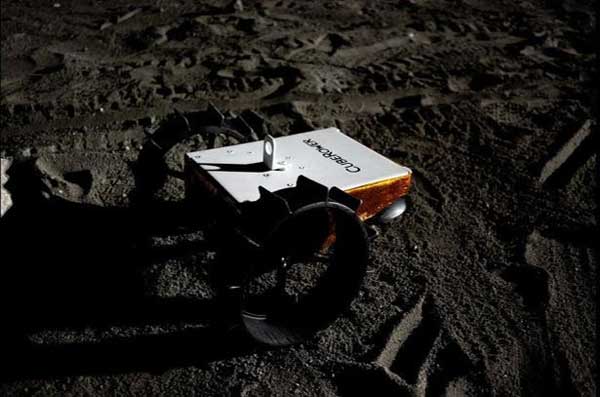
CubeRover Funded for Survive-the-Lunar-Night Mission (Image Credit: Payload)

PITTSBURGH (Astrobotic PR) – Astrobotic has been selected by NASA’s Small Business Innovation Research (SBIR) Sequential Phase II program to develop, test, and fly lunar night survival and communication technologies onboard its CubeRover platform. The effort will culminate in a commercial flight to the Moon for CubeRover on an upcoming Astrobotic lander mission, where it will demonstrate the platform’s ability to survive the harsh environment of lunar night and utilize satellite relays to traverse long distances.
Surviving the lunar night is no small feat. Temperatures can easily drop to – 200⁰C, which would typically disable thermally sensitive components like batteries and electronics and end a rover mission after just one lunar day of operation. To help address this challenge, Astrobotic has also been subcontracted by Advanced Cooling Technologies, Inc. (ACT) on a separate NASA Sequential SBIR for $1.8M to develop, integrate, and demonstrate lunar night thermal systems aboard lunar rovers and landers.
”This mission has the potential to usher in a new era of robust lunar robotics where instruments and payloads can survive months to even years on the Moon’s surface,” says Mike Provenzano, Astrobotic’s Director of Lunar Surface Systems. “CubeRover will survive longer and drive farther than any lunar rover in its class with this flight, taking Astrobotic a major step forward in opening the Moon to sustained long-term robotic operations. In fact, we even have 1 kilogram of payload space still available on this mission for a payload team looking to take advantage of this capability.”
To make full use of lunar night survivability and robust operations, rovers also need to be capable of driving long distances away from their host landers. This poses a significant communication challenge, where a rover’s host lander may be over the horizon and unable to share a communication relay between Earth and the rover. To address this challenge, this mission will also demonstrate CubeRover’s use of satellite communication relays, which will significantly extend its range.
“Some rovers are planned to rely on network protocols like Long Term Evolution, or LTE, (similar to how your cellphone transmits data) to transmit over long distances. However, these systems suffer from reduced line of sight visibility to their host lander and consequently cannot truly drive that far,” says Cedric Corpa de Fuente, Lunar Surface Systems Lead Avionics Engineer. “We’ve known of this challenge since we started building rovers and it has been a major hurdle to overcome. Following this demonstration, our CubeRover product line’s range of surface operations via satellite communications will be greatly extended.”
This announcement comes on the heels of CubeRover’s recently completed Critical Design Review with NASA’s Space Technology Mission Directorate Tipping Point program. The team will now move to complete CubeRover’s flight qualification campaign—a major step towards preparing for future missions. Astrobotic’s Lunar Surface Systems can be contacted at rovers@astrobotic.com.








